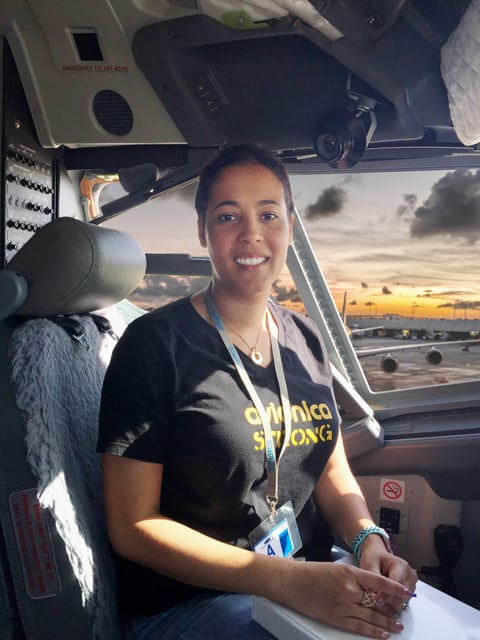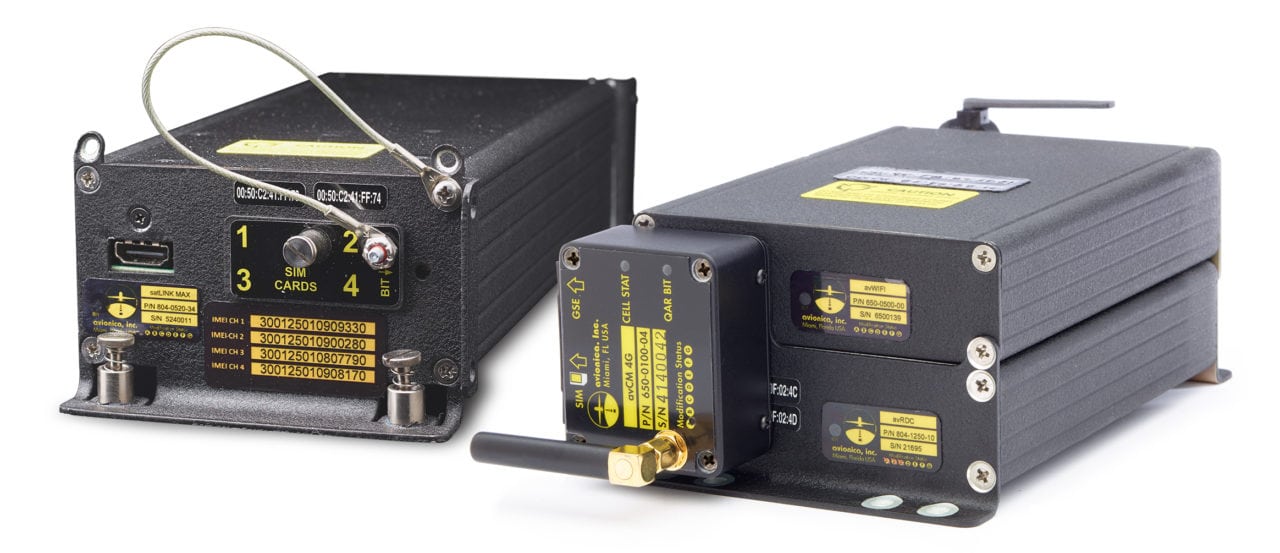
Simone Drakes (Avionica)
Aviation runs in the family for Simone Drakes. The Barbados-born Drakes’ father was an air traffic controller. Her brother is a commercial pilot.
As VP of engineering for Florida-based avionics company Avionica, Drakes serves as the company’s designated engineering representative (DER) to the FAA. Drakes said that “most avionics firms focus on cookie-cutter designs driven by mandates,” but Avionica can explore further and push the boundaries, which fits well for the outdoorsy mother of one who loves car racing and competitive biking.
Drakes spoke to Avionics about designing STCs, working with the FAA and being at the forefront of the avionics industry.
You got your degree specifically in Avionics. What drew you to the field?
Luck and chance. I started out at Embry-Riddle Aeronautical University. I applied to aeronautical science. Within a week of starting my undergraduate program I switched to aerospace engineering for a greater academic challenge. I did that for a semester, was bored out of my mind, went back and asked for something engineering that was more hands-on, and they put me in avionics.
How did you get from there to where you are today? What are some highlights or decisions you had to make along the way?
I’m sort of an adrenaline junkie; I like fast-paced moving, so when things try to settle down, I move on, I hop on that next train. When I graduated Embry-Riddle in 2001 it was hard to find a job (in the aviation industry because of 9/11). I found a firm making plastic parts. I didn’t like that because I did electronics engineering and I was just playing with plastic — I’m not messing with any electronics! So, I took the first opportunity I got to go to an STC design firm.
I learned most of what I know about avionics engineering at Emteq. I took a junior engineering spot there, then a senior engineer who had worked there and left followed up with me and brought me to Avionica. I was mostly doing EGPWS upgrades, weather radar, ELTs, flight data recorders, large transport category aircraft … I was bored.
Avionica did not have an aircraft certification department when I joined. They just developed the product and then relied on outside help, but I could bring that in-house. I was the only engineer integrating products. I would outsource STC designs they had previously, but then I would do the new stuff, like flight deck integration. I was hired and they said you have two weeks to get something done.
You’ve worked on many certifications or installations for a lot of big and smaller companies. What stands out as the most fun or interesting project you’ve worked on?
When Avionica is releasing something, it’s new, so you have to bring the FAA up to speed on the new technology. The FAA doesn’t know how to certify it and what the compliance requirements should be, what use cases you have to consider.
When I joined Avionica, we were one of two companies that were introducing Iridium SATCOM to aircraft – this new technology provided global voice and data communication for the flight crew with improved reliability and availability at a reduced cost as compared to similar pre-existing aircraft communications equipment.
Being cutting-edge on the avionics Wi-Fi side, the whole cybersecurity piece, we’re looking at things we can implement not only on the integration side but software. We’re implementing a secure OS with Docker support to host operator defined applications that are secured to the point that you can control what accessibility that particular application may or may not have, and that’s all new to the FAA so we’re educating them on what functionality that may or may not have. The system offers over-the-air updates which has long been the desire and challenge for airline operators. Being that cutting edge and leading the way, to me, has been the most exciting.
Walk me through your day-to-day at Avionica.
We have basically three engineering teams that I oversee. One is aircraft integrators–my passion because that’s my background. The second is an R&D group—those two teams work very closely together, which is beneficial to us getting things done a lot faster compared to another STC firm that doesn’t have both teams working in concert – and the other team is flight services. That third team is flight data services, which specializes in taking the black box data and converting it to parameters, what we call engineering units, which helps us understand how the aircraft is flying through the air. Now, with our GE partner, we’re moving toward aircraft health monitoring and analytics. We can say “Hey, you may want to look at this specific parameter of an engine, of an APU, of an AC unit,” to aid in a customer’s ability to predict when they’re going to have to do an avionics upgrade, having malfunctions of a hydraulics upgrade, etc. It’s exciting with GE because they’re driving that analytics, and our products are installed on theirs.
We want to not only give the pilots but also maintenance staff access to knowing what’s going wrong with the aircraft before it even does, so they’re ready to react to both emergency and predictive situations. When you operate an engine over time, the health degrades… the rate is typically established based on tests with a large safety margin. We’re measuring and doing these analytics in real time and proving that the safety margins can be reduced, resulting in operational cost and aircraft downtime savings.

Avionica’s aviONS (left) and SatLINK MAX (right) products. (Avionica)
What is working directly with the FAA like?
As an FAA applicant and DER, you’re given an advisor from the Aircraft Certification Office (ACO). We interact with him directly and facilitate and support review of our STC design data through him with other FAA groups such as the flight test group, aircraft evaluation group, structures, acoustics and MIDO (Manufacturing Inspection District Offices).
The flight test group would take a look at how the pilots going to interact with the system. This is all through the ACO. With the structure group, it would be fatigue critical systems like, say, the installation of an external antenna. How do we certify that, how it can be continually maintained, how should it be maintained for continued airworthiness? Even though it’s reviewed and approved by the DERs for compliance prior to FAA submission, that group is the group that approves the flight manual supplement.
With the ACO, I probably talk to my advisor once a week. More so, it’s we suggest and they accept. They might give us feedback, ‘you might want to look at this.’
However, when you’re dealing with new and novel tech, the path to approval has not been defined. So, we might set up a meeting and invite additional parties, like the transport director, to join so we can educate them. You’re basically getting their buy-in on your design practices, how you’re meeting the design requirements and also showing compliance to regulations.
It’s a close-knit partnership—sometimes it can be challenging, and sometimes the FAA can be slow. Our ACO engineer is very much in tune with how industry works and how the avionics industry makes money, so if I have an emergency, he is very supportive. He would walk the ground test procedure through to get it reviewed by a specific person and put pressure on them to get either their feedback or get it approved quickly. And I know that’s unusual. Our processing times are usually in the order of 4-6 months depending on what we’re looking to get accomplished, which is quite fast.
What do you project for the industry five years from now?
More broadband; more data. Really and truly that’s the only space you can guarantee connectivity for aircraft; you can’t put cell towers out in the middle of the ocean.
There will be analytics to improve the reliability of aircraft. Coming from Malaysia Air and Air France, there is a great focus on the ability to communicate with the aircraft autonomously, determine where is it, is it experiencing turbulence, the environment externally and having that data in real time.
The ability to crowdsource this information can be used to enhance operational safety for all aircraft. If Flight 276 from Miami to New York experienced bad weather, that info can be gathered and sent not only to the local news but also any trailing aircraft; the operations department of the airline may choose to adjust altitude because of the weather. Today, we really don’t have the capability to capture that weather information in real time and provide better routing to aircraft that are following the same traffic to enhance the passenger experience and reduce the possibility of failure.
We’re moving toward open architecture to allow different industries to influence and progress technology and progress the aviation space. You don’t have to know how to certify a product on an aircraft to provide growth for the space. It will be more of a partnership space. Our goal is to provide a simplified path between the whiteboard and on-wing aviation, allowing non-aviation technology companies to influence how avionics will be innovative.